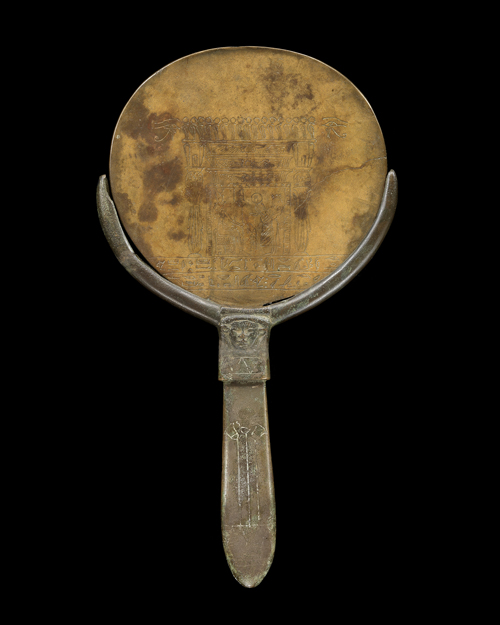
© 2008 Musée du Louvre / Georges Poncet
Late Period, 664-332 BC
Bronze
H.: 33.4 cm; W.: 16.9 cm
Department of Egyptian Antiquities, Musée du Louvre
(E 10598)
This votive mirror copies the usual structure of Egyptian mirrors: a disk is cradled by two hoops and inserted into the handle via a tenon. The handle, imitating a papyrus stem, is decorated with the head of Hathor, goddess of femininity and pleasures. The scene engraved on the disk shows a kiosk with Hathor columns sheltering the goddess Mut, wife of the god Amun. She received the offering of a mirror from a woman who is named in the dedication: “This was done by the chief priestess of Mut, Lady of Heaven, to grant life to Hornefer, daughter of Menatimen son of Irethhoreru, her mother being Asetirdis.” This mirror was one of a dozen of similar items, all dedicated by women to the goddess Mut. They are among the earliest attestations of an offering of one or two mirrors, engraved on the walls of temples from the Ptolemaic and Roman periods. This offering was specifically destined for goddesses associated with the eye of the sun-god Re, which could have both beneficial and dreaded effects. The shiny bronze disk of a mirror was identified with the sun and the moon—when looking at herself in a mirror, the satisfied goddess would allow the heavenly bodies to continue their path across the sky.
Here the votive offering takes the form of an everyday item transposed into a ritual object with the context of the temple.